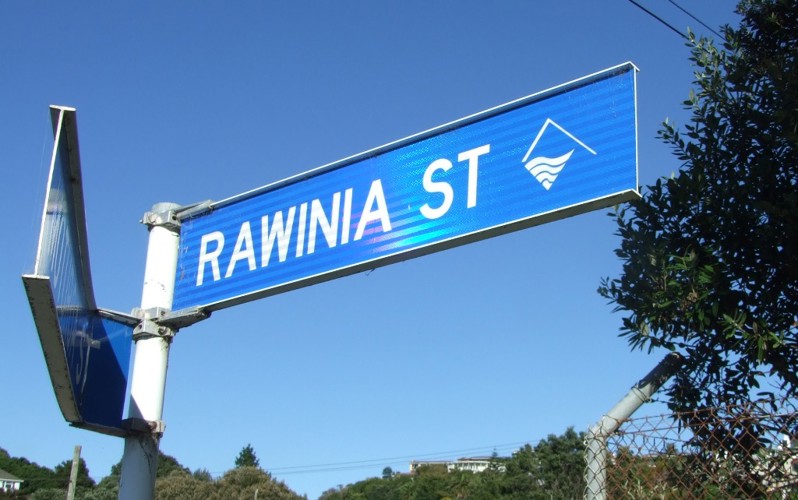 Rawinia Street (2013). Mike Gooch. Word on the street image collection.
Rawinia Street (2013). Mike Gooch. Word on the street image collection.
 Rawinia Street (2013). Mike Gooch. Word on the street image collection.
Rawinia Street (2013). Mike Gooch. Word on the street image collection.
Rawinia Street is named after Rawinia Barrett, wife of well-known Taranaki trader, whaler and adopted son of Te Āti Awa, Dicky Barrett. Born in 1811, at Ngāmotu, Rawinia was reputed to be among the most talented and beautiful Māori woman of the time. The daughter of Ngāti Te Whiti Chief, Eruera Te Puke ki Mahurangi, and Kurumai Te Rā, she had connections with several high-ranking Te Āti Awa, including Tautara a well-known Te Āti Awa chief.
Rawinia was also known as Wakaiwa Lavinia; Lavinia, being the anglicised version of her Māori name. Similarly Dicky Barrett was given the name Tiki Pārete by Te Āti Awa.
Rawinia and another Ngāti Te Whiti woman, Mereruru Te Hikanu, both eminent women in their hapū, were presented as brides to Dicky Barrett and his colleague John Love. The offer of marriage to such notable woman was indication of the willingness to strengthen the relationship between the two cultures.
Rawinia and Dicky were married first in 1828 and the marriage was solemnized again in 1841 by Wesleyan missionary, Charles Creed. Rawinia was likely to have been in her late teens and Dicky a young man in his early twenties when they first married. The couple had two daughters, Hera (Sarah) and Kara (Caroline), a third daughter; Mary-Ann, died aged 8. The relationship brought benefits economically and politically for both Māori and Pākehā.
Rawinia died in 1849 after Dicky had died two years earlier in 1847. They both died relatively young, but in their short lives they made a lasting impact on the history of New Plymouth and showed that a relationship between the two cultures could be beneficial to both. They are buried at Waitapu Urupā near Bayly Road, along with their daughter Mary-Ann and grand-daughter, Hannah. In fact the graves are quite close to Rawinia Street itself in Moturoa.
This story was originally published in the Taranaki Daily News.
Please do not reproduce these images without permission from Puke Ariki.
Contact us for more information or you can order images online here.